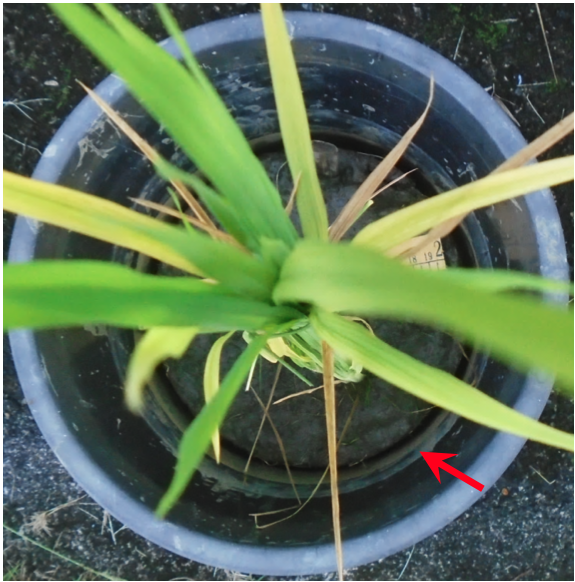VOLUME 12 NUMBER 2 (July to December 2019)

Philipp. Sci. Lett. 2019 12 (2) 107-121
available online: September 27, 2019
*Corresponding author
Email Address: jcmagahud@gmail.com
Date Received: May 3, 2018
Date Revised: August 26, 2019
Date Accepted: September 21, 2019
ARTICLE
Growth of rice, PSB Rc 82, and status of nutrients in lowland Agusan soil under alternate wetting and drying and minus-one-element conditions
by Jehru C. Magahud*, Sheena Lourdes P. Dalumpines, Agapito E. Lincuna, Jr., and Gerardo F. Estoy, Jr.
Philippine Rice Research Institute – Agusan, Basilisa, Remedios T. Romualdez,
8611 Agusan del Norte
8611 Agusan del Norte
Very poor drainage and nutrient deficiencies in soils are major constraints in improving rice growth and yields in lowland areas of Agusan. Alternate wetting and drying (AWD) – a technology that can improve soil chemical properties, and enhance rice growth and yield – is already included in the standard water management for rice production in the irrigated lowland ecosystem of the Philippines. However, for the technology to be considered in integrated crop management for Agusan, it should first be tested under local conditions. Hence, this study compared growth, chlorophyll levels, and biomass of PSB Rc 82 under AWD versus those under continuous submergence (CS). It also determined status of soil nutrients under AWD and CS. Water and fertilizer management for Agusan soil was then recommended. Agusan soil was collected from Remedios T. Romualdez, Agusan del Norte; brought to screenhouse, and used as medium to grow PSB Rc 82 for 59 days after transplanting (DAT). Minus-one-element (MOET) treatments that were subjected to AWD and CS were evaluated: no fertilizer (NF), complete fertilizer (CF), -nitrogen (-N), phosphorus (-P), -potassium (-K), -sulfur (-S), -copper (-Cu), and -zinc (-Zn). Each treatment combination was replicated five times. Growth parameters and chlorophyll levels were recorded weekly until harvesting while biomass was determined after harvesting. Results showed that rice under AWD produced more tillers, more shoot and shoot+root biomass, and less unhealthy leaf biomass compared to rice exposed to CS. However, AWD rice had lower chlorophyll levels, and less shoot and root+shoot biomass in NF and -N treatments. Compared to CS, status of soil nutrients in AWD was less for N; higher for P, K, S, Zn and Cu. Status of N and K were strongly deficient under AWD and CS; Zn almost reached the deficient level in CS. Lower growth, biomass, chlorophyll levels, and N status under AWD can be due to N losses through volatilization and nitrification-denitrification. Higher growth and biomass in CF, -P, -K, -S, -Zn, and -Cu treatments, and the improved status of these omitted nutrients under AWD can be due to various mechanisms induced by the soil’s higher reduction-oxidation (redox) potential and pH; such mechanisms eventually enhanced the uptakes of these nutrients. The study implies that, compared to CS, AWD on Agusan soil improves growth and biomass accumulation of lowland rice PSB Rc 82. As such, if water table can be controlled, the following are recommended at 5 t/ha target yield: employment of AWD along with applications of 28-28-43-24 kg/ha N-P-K-S in early stage, 15 kg/ha K in early panicle initiation, and succeeding N additions based on leaf color chart (LCC) readings. The same nutrient applications are recommended if water level is uncontrollably high, but seedlings should be dipped in 2% Zn oxide solution before transplanting. More K fertilizer can be applied if rice, particularly those under CS, exhibit K deficiency.
© 2025 SciEnggJ
Philippine-American Academy of Science and Engineering